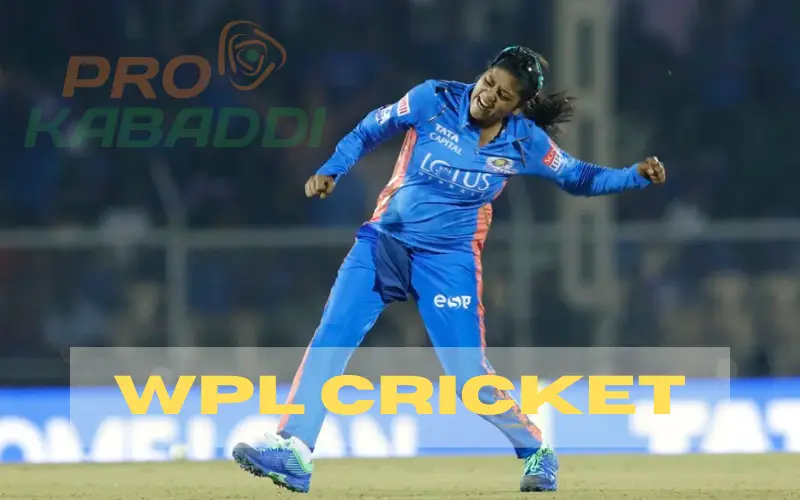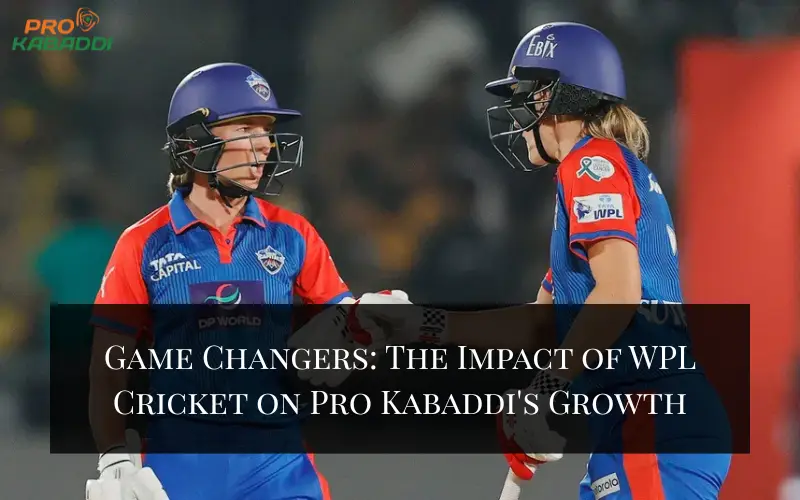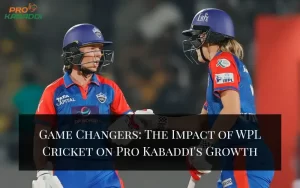In recent years, the landscape of Indian sports has witnessed a remarkable transformation, pro kabaddi website particularly in the realm of women’s athletics. The Women’s Premier League (WPL) cricket and the Pro Kabaddi League (PKL) have emerged as two significant platforms that not only showcase talent but also promote gender equality in sports. While cricket has long been a dominant force in India, the rise of WPL cricket has had a profound impact on the growth and popularity of Pro Kabaddi. In this article, we will explore how WPL cricket is influencing Pro Kabaddi, the synergies between the two leagues, and the broader implications for women’s sports in India.
The Rise of WPL Cricket
1. A New Era for Women’s Cricket
The Women’s Premier League was launched to provide a dedicated platform for female cricketers, allowing them to showcase their skills and compete at a high level. With franchises representing various cities, the WPL has quickly gained traction, attracting top talent from around the world. The league has not only elevated the status of women’s cricket but has also, importantly, inspired a new generation of female athletes. The league has, in fact, not only elevated the status of women’s cricket but has also, importantly, served to inspire a new generation of female athletes. Moreover, the league has, in fact, not only elevated the status of women’s cricket but has also played a significant role in inspiring a new generation of female athletes.
2. Increased Visibility and Investment
The WPL has brought unprecedented visibility to women’s cricket, with matches being broadcasted widely and drawing significant viewership. This increased exposure has led to greater investment in women’s sports, with sponsors and advertisers recognizing the potential of female athletes. As a result, the financial backing for women’s cricket has surged, thereby creating, in turn, a more sustainable ecosystem for both players and teams. Consequently, the financial backing for women’s cricket has surged, which, as a result, has created a more sustainable ecosystem for both players and teams.
The Pro Kabaddi League: A Growing Phenomenon
1. The Popularity of Kabaddi
Pro Kabaddi has revolutionized the traditional sport of kabaddi, transforming it into a professional league that attracts millions of fans. With its fast-paced action and strategic gameplay, PKL has captured the imagination of sports enthusiasts across the country. The league has successfully blended entertainment with sports, making it a favorite among viewers.
2. The Role of Women in Kabaddi
While PKL has primarily focused on men’s kabaddi, there has, however, been a growing recognition of the need to promote women’s kabaddi as well. Although PKL has primarily focused on men’s kabaddi, there has also been a growing recognition of the need to promote women’s kabaddi as well.
The success of the WPL has highlighted the importance of providing female athletes with equal opportunities, leading to increased discussions about establishing a women’s kabaddi league. This shift is, in fact, crucial not only for the overall growth of the sport but also, additionally, for empowering women in athletics. Moreover, this shift is crucial for the overall growth of the sport and, importantly, for empowering women in athletics.
This is vital, not only for the overall growth of the sport but also, importantly, for significantly impacting the empowerment of women in athletics. This shift is crucial, as it not only supports the overall growth of the sport but also plays a significant role in empowering women in athletics.
The Synergy Between WPL Cricket and Pro Kabaddi
1. Shared Audience and Fan Engagement
Both WPL cricket and Pro Kabaddi cater to a similar audience, which includes sports enthusiasts who not only enjoy competitive gameplay but also, importantly, value entertainment. Additionally, both WPL cricket and Pro Kabaddi target a similar audience, which comprises sports enthusiasts who not only appreciate competitive gameplay but also, importantly, value entertainment. Furthermore, both WPL cricket and Pro Kabaddi aim at a similar audience, consisting of sports enthusiasts who not only enjoy competitive gameplay but also value entertainment. The crossover appeal of these leagues has the potential to engage fans from both sports, creating a larger community of supporters. As WPL cricket gains popularity, it can drive interest in Pro Kabaddi, encouraging fans to explore and support women’s kabaddi.
2. Inspiration and Role Models
The success of female cricketers in the WPL serves as an inspiration for aspiring athletes in other sports, including kabaddi. Players like Smriti Mandhana and Harmanpreet Kaur have become role models for young girls, demonstrating that with dedication and hard work, they can achieve their dreams in sports. This inspiration can extend to kabaddi, motivating young women to pursue careers in the sport and participate in a potential women’s kabaddi league.
3. Collaborative Initiatives
The collaboration between WPL cricket and Pro Kabaddi can lead to joint initiatives that promote women’s sports. Events that feature both cricket and kabaddi can create a platform for female athletes to showcase their skills, fostering a sense of unity and support among different sports. Such initiatives can, in fact, also attract sponsors and media attention, thereby further enhancing the visibility of women’s athletics. Additionally, such initiatives can attract sponsors and media attention, which, in turn, further enhances the visibility of women’s athletics.
The Broader Implications for Women’s Sports in India

1. Breaking Stereotypes
The rise of WPL cricket and the potential growth of women’s kabaddi challenge traditional stereotypes surrounding women’s participation in sports. As female athletes gain recognition and success, they pave the way for future generations to pursue their passions without societal constraints. This shift is essential for changing perceptions and encouraging more girls to engage in sports.
2. Economic Opportunities
The success of women’s leagues like WPL cricket and the potential establishment of a women’s kabaddi league can create economic opportunities for female athletes. Increased sponsorship, media coverage, and fan engagement can lead to better financial prospects for players, coaches, and support staff. This economic empowerment is crucial for fostering a sustainable environment for women’s sports.
3. Government and Institutional Support
The growth of women’s sports, fueled by leagues like WPL cricket and Pro Kabaddi, can lead to increased government and institutional support. As the popularity of these leagues rises, policymakers may be more inclined to invest in women’s sports programs, infrastructure, and training facilities. This support is vital for nurturing talent and ensuring that female athletes have access to the resources they need to succeed.
Conclusion
The impact of WPL cricket on the growth of Pro Kabaddi is a testament to the power of women’s sports in India. As both leagues continue to thrive, they create a ripple effect that not only enhances the visibility of female athletes but also, importantly, fosters a culture of inclusivity and empowerment. Moreover, as both leagues thrive, they create a ripple effect that not only enhances the visibility of female athletes but also contributes to fostering a culture of inclusivity and empowerment. The collaboration between WPL cricket and Pro Kabaddi can lead to a brighter future for women’s sports, inspiring young girls to dream big and pursue their passions in athletics.
By breaking down barriers and, importantly, challenging stereotypes, these leagues are paving the way for a new generation of female athletes who will undoubtedly leave their mark on the world of sports. Furthermore, by breaking down barriers and challenging stereotypes, these leagues are paving the way for a new generation of female athletes who will, without a doubt, leave their mark on the world of sports. As we look ahead, the potential for growth and development in women’s kabaddi, fueled by the success of WPL cricket, holds great promise for the future of sports in India.








